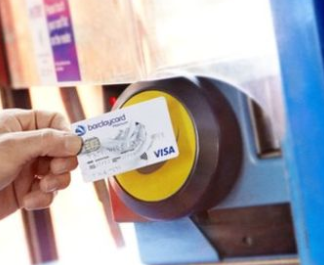The UK Card Association has confirmed that the payment limit imposed on contactless payments will rise to £30 from £20. There are some 52 million contactless cards in circulation in the UK. Users of these cards can now make payments of up to £30 without the need to enter a pin number. It comes as no surprise that the limit should be raised after the latest numbers released this month confirmed an impressive rise in the volume of contactless payments in the UK in 2014. Consumers are starting to see the benefits of contactless payments and trust their security. In 2014 contactless cards were used some 319 million times, compared to 100 million instances in 2013.
The amount of spending in 2014 trebled from 2013, reaching £2.32 billion. Just to emphasise that growth - the spending by contactless cards in 2014 was double that over the previous six years combined. Undoubtedly 2014 was a breakthrough year for contactless payments in the UK. The adoption of contactless payments by Transport for London in September of 2014 was a major contributing factor. More than £40 million was spent on London's transport network using contactless cards alone. It won't be long till other major cities in the UK adopt the solution too. Richard Koch, Head of Policy at The UK Card Association commented on the figures saying:
"Contactless has now firmly stepped into the mainstream. With usage soaring every month last year, we've seen people flocking to contactless payments as they switch away from cash. For retailers, contactless means quicker queues at the tills and greater convenience for their customers."
So what does this growth of payments using contactless cards mean for mobile payments? Both these cards and mobile payments like Apple Pay utilise NFC (near field communication) technology. As a side point - it is the NFC aspect of the technology that gives us the contactless name, despite the fact that the majority of the time when people use them in the wild - contact is most definitely made!
"the willingness consumers in the UK are showing to ditch cash, ditch chip and pin and utilise a contactless system is a positive sign for mobile payment innovators and providers."
The two major NFC based mobile payments, Apple Pay and Google Wallet, have not made their way to the UK yet. It's hard to know whether the growth of contactless card payments will assist or deter their adoption. It's quite possible consumers will be unwilling to change their habits - after so recently settling into a new one - one that the payment limit rise shows is gaining their trust. There will be perceived security concerns which mobile payments will need to overcome - which is an issue of trust that contactless cards seem to be on their way to hurdling.
Despite these concerns, I think the growth of contactless payments will ultimately be beneficial to the uptake of mobile payments. It is not so big a step to go from waving your contactless card across a sensor, to waving your phone. And I certainly know which one I have to hand more often. If you have multiple contactless cards, you have to halt, and extract the one you would like to use from your purse or wallet - an issue that does not exist with the phone. A smartphone solution can also do so much more, there's no facility to keep an immediate track of your payments on a plastic card, or have a seamless loyalty system integrated.
Overall, the willingness consumers in the UK are showing to ditch cash, ditch chip and pin and utilise a contactless system is a positive sign for mobile payment innovators and providers. There is an appetite for payment systems that improve speed, convenience and security of shopping - and mobile payments have the capacity to do that and more.
By Matthew Taylor
17th February 2015


